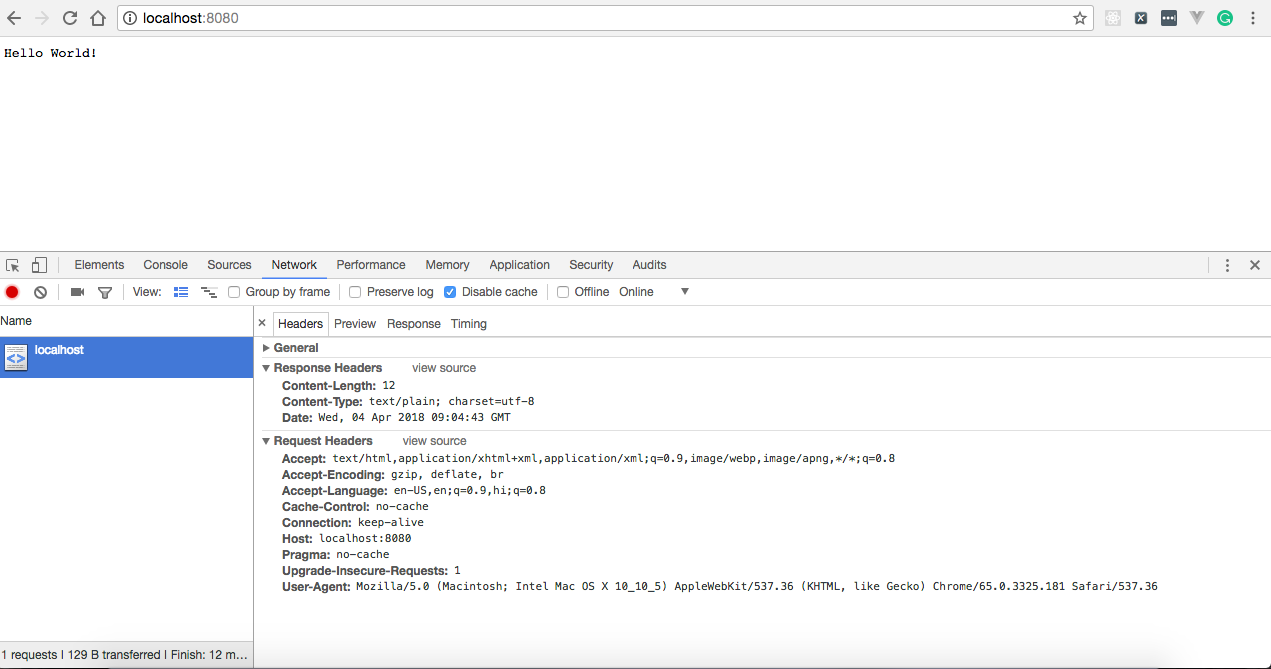Creating a simple HTTP server
As a programmer, if you have to create a simple HTTP server then you can easily write it using Go's net/http package, which we will be covering in this recipe.
How to do it…
In this recipe, we are going to create a simple HTTP server that will render Hello World! when we browse http://localhost:8080 or execute curlhttp://localhost:8080 from the command line. Perform the following steps:
- Create
http-server.goand copy the following content:
package main
import
(
"fmt"
"log"
"net/http"
)
const
(
CONN_HOST = "localhost"
CONN_PORT = "8080"
)
func helloWorld(w http.ResponseWriter, r *http.Request)
{
fmt.Fprintf(w, "Hello World!")
}
func main()
{
http.HandleFunc("/", helloWorld)
err := http.ListenAndServe(CONN_HOST+":"+CONN_PORT, nil)
if err != nil
{
log.Fatal("error starting http server : ", err)
return
}
}- Run the program with the following command:
$ go run http-server.goHow it works…
Once we run the program, an HTTP server will start locally listening on port 8080. Opening http://localhost:8080 in a browser will display Hello World! from the server, as shown in the following screenshot:

Hello World!
Let’s understand what each line in the program means:
package main: This defines the package name of the program.import ( "fmt" "log" "net/http" ): This is a preprocessor command that tells the Go compiler to include all files fromfmt,log, and thenet/httppackage.
const ( CONN_HOST = "localhost" CONN_PORT = "8080" ): We declare constants in the Go program using theconstkeyword. Here we declared two constants—one isCONN_HOSTwith localhost as a value and another one isCONN_PORTwith8080as a value.func helloWorld(w http.ResponseWriter, r *http.Request) { fmt.Fprintf(w, "Hello World!") }: This is a Go function that takesResponseWriterandRequestas an input and writesHello World!on an HTTP response stream.
Next, we declared the main() method from where the program execution begins, as this method does a lot of things. Let’s understand it line by line:
http.HandleFunc("/", helloWorld): Here, we are registering thehelloWorldfunction with the/URL pattern usingHandleFuncof thenet/httppackage, which meanshelloWorldgets executed, passing(http.ResponseWriter,*http.Request)as a parameter to it whenever we access the HTTP URL with pattern/.err := http.ListenAndServe(CONN_HOST+":"+CONN_PORT, nil): Here, we are callinghttp.ListenAndServeto serve HTTP requests that handle each incoming connection in a separate Goroutine.ListenAndServeaccepts two parameters—server address and handler. Here, we are passing the server address aslocalhost:8080and handler asnil, which means we are asking the server to useDefaultServeMuxas a handler.if err != nil { log.Fatal("error starting http server : ", err) return}: Here, we check whether there is a problem starting the server. If there is, then log the error and exit with a status code of1.


































































